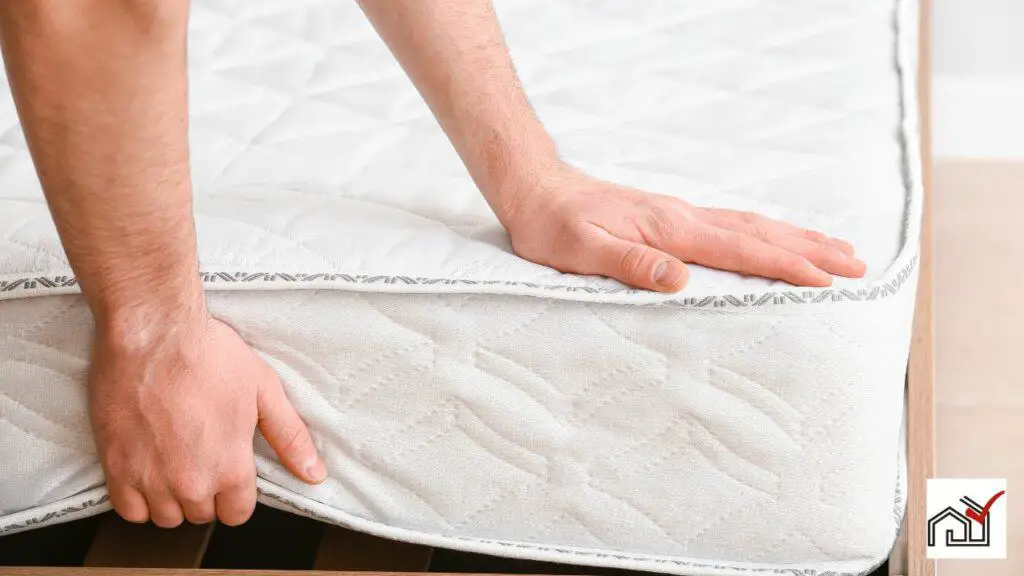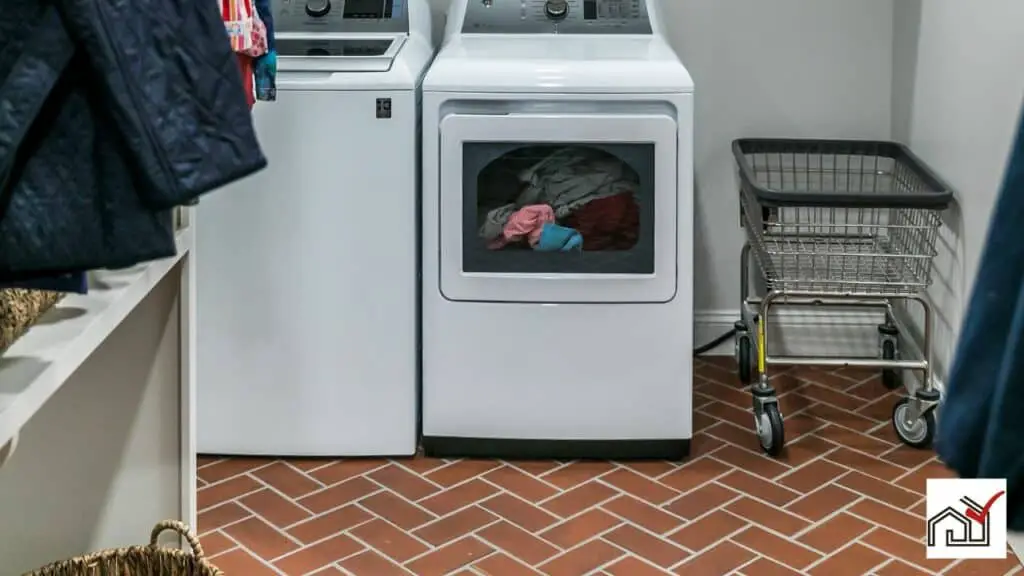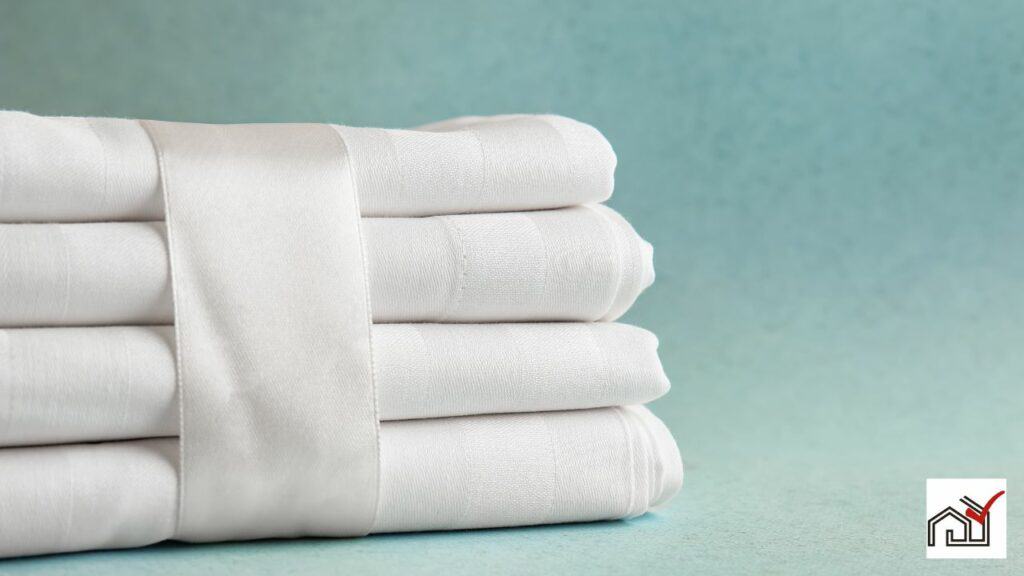Store your mattress in a dry, cool area away from sunlight and extreme temperatures to maintain its condition. A climate-controlled storage unit is best to prevent humidity and temperature changes.
If storing at home, use a clean, ventilated space. Lay the mattress flat on a sturdy surface or support it evenly to keep its shape. Use a breathable cover to protect it from dust and allergens.
Handle the mattress carefully and inspect it regularly while in storage.
Assessing Mattress Condition
Before storing a mattress, inspect it for stains and clean them with a mattress cleaner to prevent them from setting. Air out the mattress to remove odors and moisture, reducing the risk of mold and mildew. This should be done in a well-ventilated area for several hours.
Once dry, cover the mattress with a breathable plastic bag to keep out dust, dirt, and pests. Ensure the bag is sealed properly but does not trap moisture.
Consider using climate-controlled storage to maintain a stable environment and protect the mattress from temperature and humidity-related damage.
Cleaning the Mattress
To store a mattress properly, start by cleaning it to remove dirt, stains, and smells. Remove all bedding and check for any spots that need extra cleaning. Use a stain remover designed for mattresses and follow the instructions to avoid damage.
Spread baking soda over the mattress to clean it and remove odors. Let it sit for a few hours to absorb moisture, then vacuum it off. For persistent stains or smells, apply an upholstery cleaner as directed and make sure the mattress is completely dry to prevent mold or mildew.
Wrap the clean, dry mattress in a breathable storage bag and seal it with duct tape. Do not use plastic wrap as it can hold moisture and cause damage.
Air out the mattress every few months and use a dehumidifier in moist storage areas.
Choosing a Mattress Cover
Choosing the right mattress cover is key to protecting your mattress when storing it and extending its life. A mattress cover defends against dust, dirt, and moisture, which can damage the mattress. When storing your mattress, select a cover that offers sufficient protection.
For short-term storage or during a move, a light plastic cover, typically made of polyethylene, is adequate. These are available at hardware stores and should be wrapped around the mattress loosely to allow air flow but sealed tightly with duct tape to keep out contaminants.
For long-term storage, use a thicker, durable mattress storage bag. These provide better protection and are less likely to tear. They fit tightly around the mattress, protecting against moisture and pests.
Whatever the storage time, make sure the cover is sealed well to prevent any unwanted elements from getting in. A properly protected mattress will maintain its quality, ready for future use.
A good mattress cover is a worthwhile investment for your mattress's longevity.
Selecting a Storage Location
When storing a mattress, it's important to choose a location that will preserve its condition. A climate-controlled storage unit is a good option to maintain stable temperatures and prevent moisture buildup, which can cause mold and damage the mattress over time.
If you're considering a storage facility, pick one close to your home for convenience, and make sure it can fit your mattress upright if space is limited. However, storing a mattress flat is preferable to maintain its structure and comfort.
At home, avoid basements and areas with temperature swings and high humidity. Opt for a stable climate room and use a dehumidifier if necessary.
To summarize, for long-term mattress storage, use a climate-controlled unit and store the mattress flat in a location safe from humidity and temperature changes to ensure its durability and comfort.
Proper Mattress Positioning
Choose a suitable storage area for your mattress and keep it flat to maintain its structure and prevent damage. Do not store the mattress on its side as this can cause the materials inside to shift, affecting comfort and support. Storing it on its side can also increase the risk of damage.
Place the mattress on a clean, dry surface to help prevent mold by allowing air circulation and reducing moisture buildup. If storing multiple mattresses, stack them flat and aligned with one another, using mattress protectors between them to avoid wear and ensure they remain stable.
For long-term storage, use a climate-controlled unit to protect against mold and environmental changes. Cover the mattress in a sturdy plastic bag, using two bags for added protection, to keep out dust, pests, and moisture. This will help maintain the mattress's condition for future use.
Maintaining Mattress Shape
To maintain a mattress's shape while in storage, place it flat on a supportive surface. This prevents deformation and is particularly important for memory foam mattresses that are prone to misshaping under pressure. Do not put items on top of the mattress, as this can cause indentations and damage.
If other items must be stored in the same area, elevate the mattress on a wooden pallet to allow airflow and prevent moisture buildup. For memory foam mattresses, ensure they are stored in a dry place and are completely dry before storage to avoid mold and mildew. Wrap the mattress in plastic to protect it from dust, but unwrap and air it out every few months before resealing.
Avoid stacking mattresses if possible. If you must stack them, do so for a short period to avoid damage. Proper storage ensures that the mattress remains supportive and comfortable for future use.
Retrieving the Mattress
When retrieving a mattress from storage, inspect it for damage or contamination. Check for mold, mildew, pests, discoloration, odors, or material deterioration.
Remove the mattress from storage and air it out in a ventilated area for several hours to eliminate any stale smells and prevent mold. If it was covered with plastic, remove the cover to avoid moisture damage.
Place the mattress in a spot with good air circulation and on a clean, dry surface. Remove any items stored with it that may retain moisture.
Before using the mattress, ensure it is dry and clean. Vacuum the surface to remove dust.
Properly following these steps will help maintain the mattress in good condition for use.




